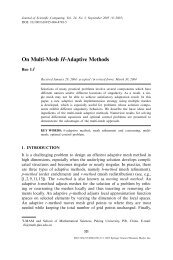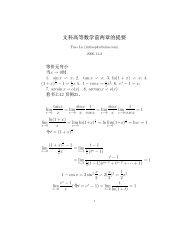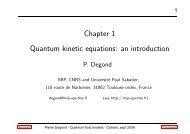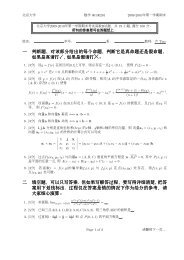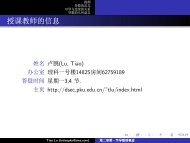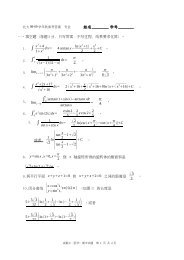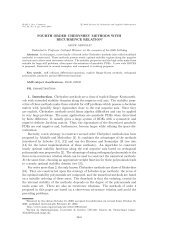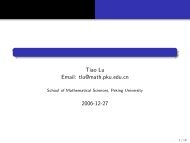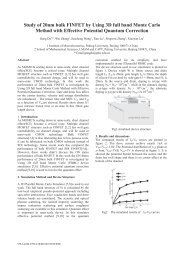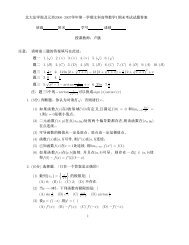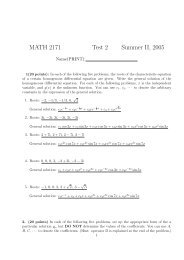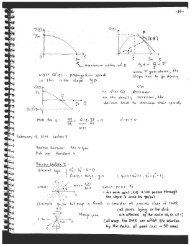Abstract
Abstract
Abstract
Create successful ePaper yourself
Turn your PDF publications into a flip-book with our unique Google optimized e-Paper software.
CHAPTER 4. THEORY 97<br />
X. Letδ>0. For k>δ,wehave<br />
x<br />
G1(u)(x, k) =<br />
0<br />
dz C<br />
k<br />
Kmax<br />
C(z−x)<br />
e k h(z,k) ¯<br />
−Kmax<br />
u(z,k ′ )dk ′ .<br />
We can think of this term as an integral operator whose input is an L 2 ([0,L]) function<br />
given by<br />
and kernel function is given by<br />
Kmax<br />
u(z,k<br />
−Kmax<br />
′ )dk ′<br />
C<br />
k<br />
C(z−x)<br />
e k h(z,k). ¯<br />
For k>δ, the kernel function is continuous. Therefore, the integral operator is a<br />
compact map from L 2 ([0,L]) to C([0,L] × [δ, Kmax]). Since Kmax<br />
−Kmax un(x, k ′ )dk ′ ⇀<br />
Kmax<br />
−Kmax ū(x, k′ )dk ′ in L 2 ([0,L]), then G1(un)(x, k) converges uniformly to G1(ū)(x, k)<br />
for δ




